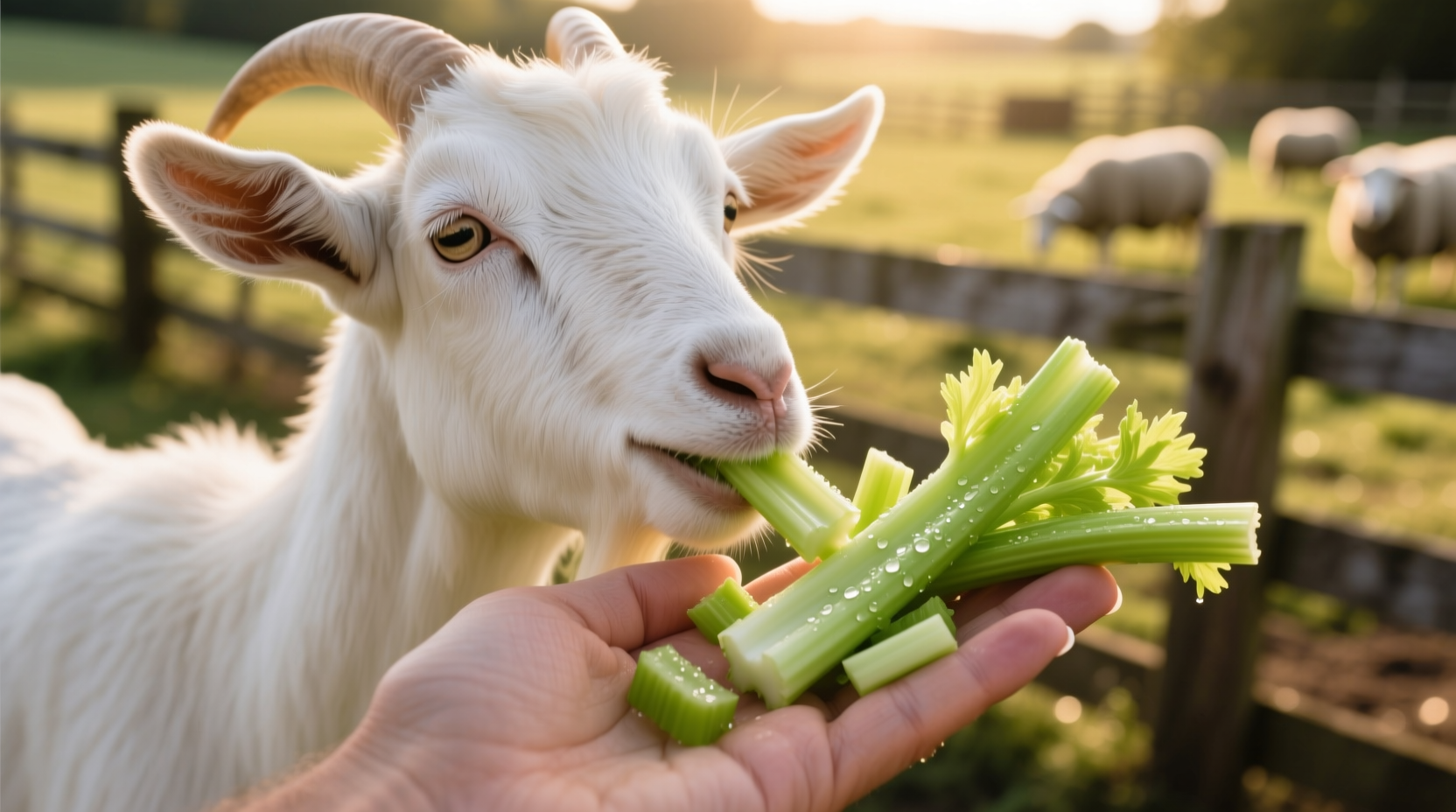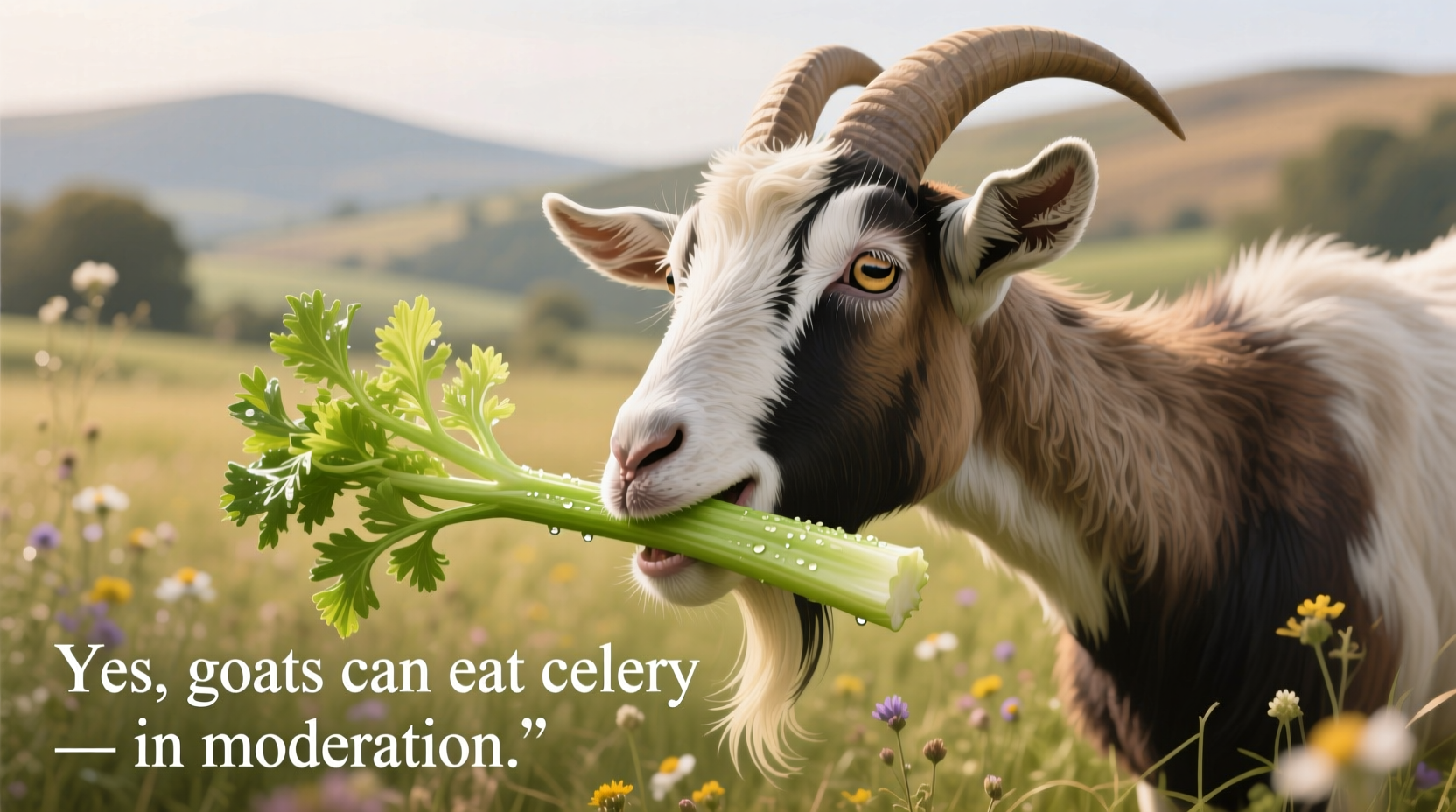As a goat owner, you're probably looking for clear, trustworthy information about safe treats for your animals. This guide delivers exactly what you need: science-backed facts about feeding celery to goats, practical preparation tips, and specific quantity guidelines you can implement immediately.
Understanding Celery's Role in Goat Nutrition
Celery isn't just a crunchy snack for humans—it offers genuine nutritional benefits for goats when fed appropriately. The stalks contain valuable vitamins and minerals that complement a goat's primary diet of hay and pasture. However, understanding exactly how celery fits into proper goat nutrition requires examining both its benefits and limitations.
Celery Nutrition Facts for Goats
Before adding any new food to your goat's diet, you need to understand what nutritional value it provides. Celery offers several beneficial components while lacking others essential to goats.
| Nutrient | Amount in Celery (per 100g) | Relevance to Goats |
|---|---|---|
| Water content | 95% | Excellent hydration source, especially during hot weather |
| Dietary fiber | 1.6g | Supports healthy digestion but insufficient as primary fiber source |
| Vitamin K | 29.6μg | Supports blood clotting and bone health |
| Potassium | 260mg | Essential electrolyte, especially after exertion |
| Calcium | 40mg | Important but insufficient as primary calcium source |
According to research from Penn State University's College of Agricultural Sciences, goats require a balanced calcium-to-phosphorus ratio of 2:1 in their overall diet. While celery contains some calcium, it shouldn't be relied upon as a primary source of this essential mineral.
Preparing Celery for Goat Consumption
The stringy nature of celery presents a potential choking hazard for goats if not prepared properly. Follow these steps to safely feed celery to your goats:
- Wash thoroughly to remove pesticides or contaminants
- Cut into 1-2 inch pieces to prevent choking on long strings
- Mix with regular feed to encourage proper chewing
- Introduce gradually to monitor for any digestive upset
Many goat owners report that their animals prefer the leafy green tops of celery over the stalks. These tops contain higher concentrations of certain nutrients but should still be fed in moderation.

Appropriate Celery Feeding Guidelines
Understanding portion control is crucial when feeding treats like celery to goats. The appropriate amount varies based on several contextual factors:
- Adult goats: No more than 1-2 small stalks per day, divided into multiple feedings
- Young kids: Introduce only after 3 months of age, starting with very small amounts
- Pregnant or lactating does: Slightly higher quantities may be appropriate due to increased hydration needs
- During extreme heat: Celery's high water content makes it an excellent hydrating treat
The American Goat Federation recommends that treats like celery should never exceed 10% of a goat's total daily food intake. The majority of their nutrition should come from quality hay, pasture, and specially formulated goat feed.
When Celery Might Not Be Appropriate
While celery is generally safe for goats, certain situations warrant caution or avoidance:
- Goats with urinary calculi history: Celery's oxalate content may exacerbate this condition
- Organic vs. conventional celery: Non-organic celery often contains pesticide residues that can accumulate in goats
- During certain medical treatments: Consult your veterinarian if your goat is on medication
- As a replacement for forage: Never substitute celery for essential hay or pasture
A study published in the Journal of Animal Science noted that while goats are browsers with diverse dietary preferences, their primary nutritional needs are best met through fibrous forage rather than vegetable treats.
Alternative Treat Options for Goats
If you're looking to diversify your goat's treat options beyond celery, consider these safe alternatives:
- Carrot slices (in moderation due to sugar content)
- Apples (without seeds)
- Leafy greens like kale or spinach
- Pumpkin (excellent during fall months)
- Herbs like mint or parsley
Remember that variety in treats is beneficial, but consistency in their primary diet is essential for maintaining healthy rumen function in goats.
Monitoring Your Goat's Response to Celery
When introducing any new food, careful observation is crucial. Watch for these signs that indicate how well your goat is tolerating celery:
- Positive signs: Normal appetite, regular digestion, bright eyes, active behavior
- Warning signs: Decreased appetite, diarrhea, bloating, or lethargy
If you notice any negative reactions after feeding celery, discontinue use and consult your veterinarian. Most goats tolerate celery well when fed in appropriate quantities and prepared correctly.











 浙公网安备
33010002000092号
浙公网安备
33010002000092号 浙B2-20120091-4
浙B2-20120091-4